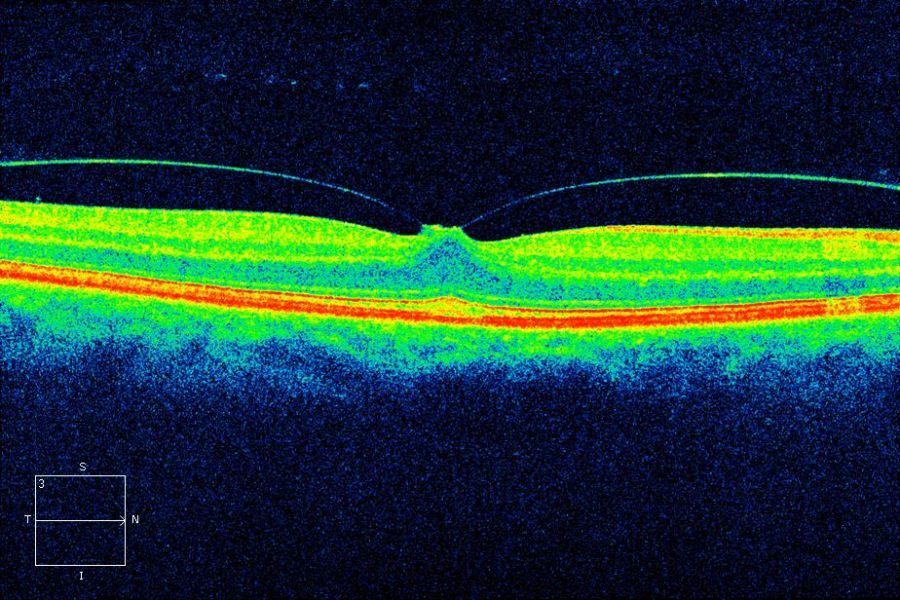Over the years, the gel inside the eye or “vitreous gel” will liquefying as the effect of aging causing in patients the moving shadows, known as “floaters”, and which cause many eye consultations.
This gel at be liquefied, is detached in many cases partially or completely of the retina in which is anchored, and may cause a retinal detachment and a surgery
But sometimes, remains adherent to a point at the center of the retina called the macula, which is the most important quality vision area, and originated what is called asymptomatic vitreomacular adhesion, causing traction of this area and may even in advanced stages, cause a hole into
Vitreomacular adhesion is a chronic disorder that if left untreated, can cause decrease in visual acuity and /or distortion of the same, with frequent distorted images known as ” metamorphopsias ” and / or sensation of flashes, or “photopsias”
Classically the treatments with greatest success is surgery, there was no other alternative until recently.
Nowadays the “Ocriplasmin” is commercialized, or a recombinant form of human protein (plasmin), which is applied by a unique intravitreal injection originating a dissolution of the vitreous base and specifically of the fibers that originate traction, according to recent studies by 55% of success is achieved in the separation of the vitreous gel of the macula without surgery.
This gel at be liquefied, is detached in many cases partially or completely of the retina in which is anchored, and may cause a retinal detachment and a surgery
But sometimes, remains adherent to a point at the center of the retina called the macula, which is the most important quality vision area, and originated what is called asymptomatic vitreomacular adhesion, causing traction of this area and may even in advanced stages, cause a hole into
Vitreomacular adhesion is a chronic disorder that if left untreated, can cause decrease in visual acuity and /or distortion of the same, with frequent distorted images known as ” metamorphopsias ” and / or sensation of flashes, or “photopsias”
Classically the treatments with greatest success is surgery, there was no other alternative until recently.
Nowadays the “Ocriplasmin” is commercialized, or a recombinant form of human protein (plasmin), which is applied by a unique intravitreal injection originating a dissolution of the vitreous base and specifically of the fibers that originate traction, according to recent studies by 55% of success is achieved in the separation of the vitreous gel of the macula without surgery.
While surgery today gets 90% of success against 50-55% on the Ocriplasmin, must be considered an alternative to the first, in certain cases such as macular holes small and / or focal vitreomaculares tractions, because in these cases it may cause patients enhance the quality


Recent Comments